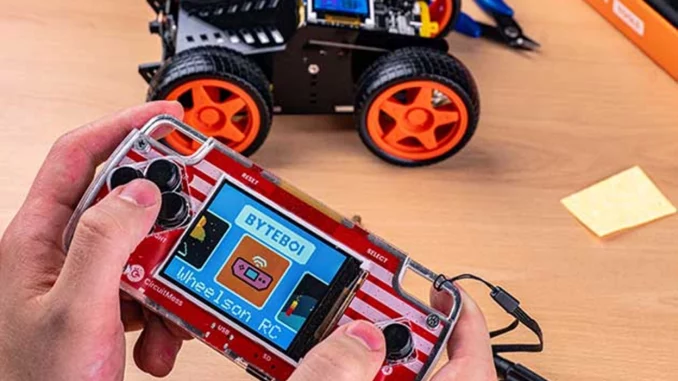
Shaping Students for Tomorrow
As the world turns digital, schools need to modify their curricula so that pupils set today pleasure transform them tomorrow. In every aspect education researchers look for new methods and wild gains. This change changes the goal of education, teachers ‘ways of teaching, influencing students’ attitudes to life in turn.
STEM Education Evolving
Before, STEM education focused on teaching students particular disciplines such as science, mathematics, engineering and technology separately. Yet now, as the education system incorporates a more total standpoint in curriculums, these fields are increasingly brought together so that students can seehow they interrelate. This interdisciplinary approach enables pupils to employ what they have learned in practice and encourages their critical thinking, problem-solving abilities and openness to new challenges.
Coding as Core Competency
Coding used to be a specialty skill at best, but now it’s a fundamental part of modern school education. With coding languages such as Python, JavaScript and Scratch woven into cur ricula, children’s learning continues to develop beyond the point where they are simply recording code: they start seaing the significance of algorithmic thinking itself. Learning coding is the art of breaking down complex problems into little pieces which are easier to understand. What starts out as a theory on computer science becomes a practical job that anyone can learn from quickly
As career preparation The blend of these two factors gives people new skills in both thinking (adding something to their cognitive ability think analytically) and living skills too.
If you’re great at coding, you’re learned about science and technology from the moment of your birth. It’s unneeded to worry, then, about the coming earth, when digital literacies and software skills will be very important for survival. Significantly, student involvement ranges from basic coding exercises at the beginning of the school year to increasing complexity as they move forward. This early exposure spawns a culture of questioning and invention, drawing students into science and engineering–or higher still.
Schooling with an Eye to the Future
With the drive of technology integration, societal demand for skills related to STEM is on the rise. Professions in this area include Data Science and Artificial Intelligence, subjects which require a new type of thinking. Therefore the workforce must skill up particularly in those areas. Schools are also trying to equip their students with those attributes necessary for the new slate of high-demand jobs. In this vein, they teach them the languages of code and STEM education. Split by line,LEFT_BEHIND_SOCIALLY,
There are three talents in particular that STEM education calls forth, lacking in our society today:–Mechanical engineering ability as distinguished by economists; and a striving spirit. Persistence and self-reliance. These are things which all combine to make for an easier time in life. When pupils carry out group projects that force them to cooperate with others, test all their theories and refine concoctions, they are experiencing first hand scenarios from the world of real work–experience which can prove invaluable when it comes time for them to go find jobs.
Stemming the Tides of Both Gender and Equity
Because they have historically been underrepresented, Women and underrepresented groups are most noticeably omitted from fields like Science, Technology, Engineering and Mathematics. With coding and STEM subjects introduced at an early age, educational institutions can replace those prejudices. This is a prediction about the future. By doing computer work in a laboratory, molecular biology and zoology will be combined into one.
Coding boot camps for girls, as well as a growing number of outreach programmes targeted at minority communities, all form part of an environment as inclusive as the one we seek to construct. These programmes not only confer technical expertise on their participants, but also instill confidence and affinity for science, technology, engineering and math careers. This shatters people’s existing impressions of what you think work in future technology-related industries is like. Thus when the day comes it will be better and safer for every group or class than for one group to be too powerful and selfsustaining.
Challenges and Future Directions
Yet despite the advantages, integrating coding and STEM into school curricula poses a number of hurdles. Teachers need to be well trained to teach these subjects and schools must invest in assets and technology. Moreover, because technology changes so rapidly and so quickly the point of what should be taught has also changed with the times.
To narrow the inequality between city and countryside school education in China, we must form a partnership between all sections of society. By working together, teachers can improve their level of expertise, students obtain access to real-life drinking water projects – and a technical means of modifying the very nature this precious resource. And educators will need to keep abreast with the new skills that technological innovation provides. In particular we must lay a solid foundation for the further development of every student. But today it is not enough to understand this, it must be integrated into K to 12 curriculum planning based on a broader pedagogical approach: coding and STEM. The endgoal is to promote an integrated range of STEM education strategies that pushes coding and computer literacy down to the very bedrock of each individual student’s learning. In this way not only do schools raise their academic standards but they are helping all learners to seize hold of their future. Whatever lies ahead, the continued evolution of STEM education should be involved in promoting innovation and beneficial changes. It will help to bridge the gaps between those who continue to benefit from it more with every passing year and those who can only sit and watch; so that even before they enter the labor market young people in China can aspire to join high-performance teams in science technology which rank world-wide.